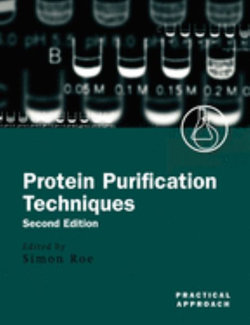beds. These developments have reduced the workload involved in protein purification, but there is still a need to consider how unit operations linked together to form a purification strategy, which can
be scaled up if necessary. The two Practical Approach books on protein purification have therefore been thoroughly updated and rewritten where necessary. The core of both books is the provision of detailed practical guidelines aimed particularly at laboratory scale purification. Information on scale-up considerations is given where appropriate. The books are not comprehensive but do cover the major laboratory techniques and common sources of protein. Protein Purification Techniques
focuses on unit operations and analytical techniques. It starts with an overview of purification strategy and then covers initial extraction and clarification techniques. The rest of the book concentrates on
different purification methods with the emphasis being on chromatography. The final chapter considers general scale-up considerations. Protein Purification Applications describes purification strategies from common sources: mammalian cell culture, microbial cell culture, milk, animal tissue, and plant tissue. It also includes chapters on purification of inclusion bodies, fusion proteins, and purification for crystallography. A purification strategy that can produce a highly pure
single protein from a crude mixture of proteins, carbohydrates, lipids, and cell debris to is a work of art to be admired. These books (available individually or as a set)are designed to give the laboratory worker
the information needed to undertake the challenge of designing such a strategy.




Share This Book: